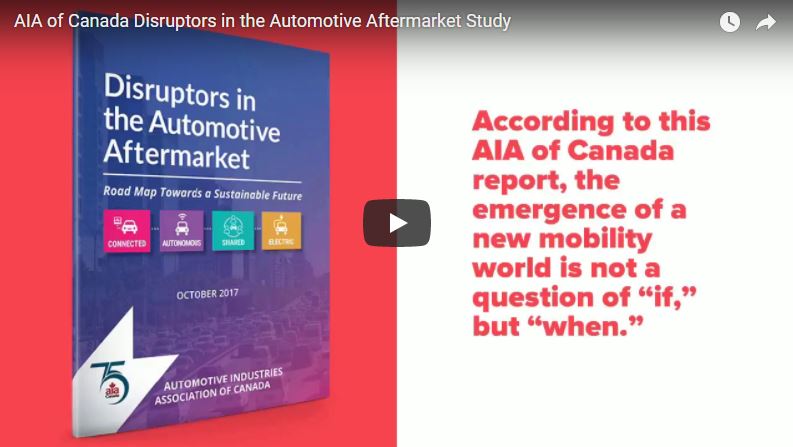The world of the new mobility is coming to the automotive aftermarket and a significant part of that future may be fleet based. According to the Automotive Industries Association of Canada’s report, “Disruptors in the Automotive Aftermarket: Road Map Towards a Sustainable Future,” those with an eye to the fleet-service model will have a box seat success when that future arrives.
And while the report acknowledges that it is when, not an if, scenario, “when” remains a question.
And while a vast majority of AIA members (87%) that disruption will occur in the next decade, there is little appreciation of the depth and scope of change that might occur.
“As technology and society, in general, shift from one mobility platform (i.e. the traditional car ownership model) to a new, Mobility as a Service (MaaS) platform model, there will be significant industry disruption and disintermediation to businesses geared towards servicing and maintaining of the old model. These changes have already started to occur, with many aftermarket businesses now going through significant consolidation to improve cost structures and gain efficiencies.”
There are seeming contradictions in the survey results: while a large majority of businesses believe there will be a technology disruption in the next 10 years (87%), are actively looking for new ways to diversify (88%), and are willing to invest in new technologies to grow or maintain the business (95%), 64% still believe that autonomous vehicles are a long way off (15+ years), and 4 in 10 believe electric vehicles will cause little disruption.
Perhaps the answer is within the study’s findings for why the expectations are pushed so far out:
“The automotive aftermarket (with the exception of the collision repair industry) has the luxury of having a time lag behind OEMs and dealers with new technologies, allowing them, the industry, to analyze and see what works.” The study also notes that the dealer service network’s larger facilities and higher overhead may hamper their agility, something that the aftermarket excels at.
The study does emphasize that the continued focus on the Canadian Automotive Service Information Standard (CASIS) is a must to ensure continued access to repair information for the emerging technologies.
Despite the challenges for the aftermarket predicted from the coming changes—training, positioning, education for those entering the workforce–the report does also forecast a positive outlook; “With these things in hand, the automotive aftermarket will continue to have a bright and prosperous future, and continue to make a great contribution to the Canadian economy.
The Disruptors in the Automotive Aftermarket: Road Map Towards a Sustainable Future” is available free to AIA of Canada members, and to non-members for $299. Visit www.aiacanada.com/publications/research-and-policy/


0 Comments